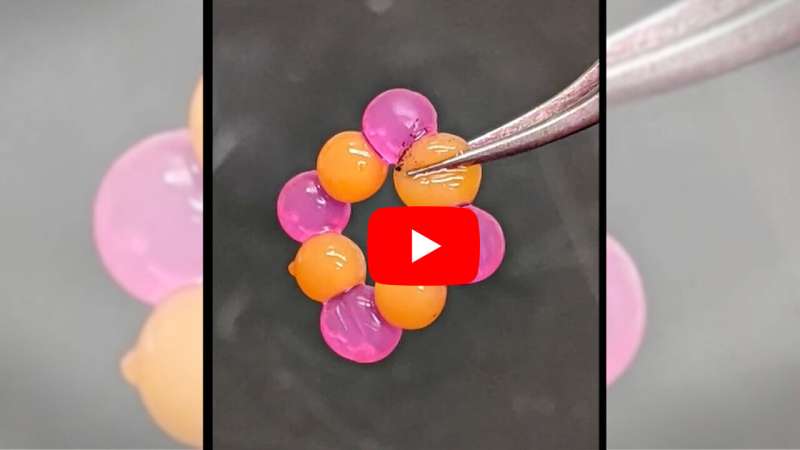This article has been reviewed according to Science X's editorial process and policies. Editors have highlighted the following attributes while ensuring the content's credibility:
fact-checked
peer-reviewed publication
trusted source
proofread
'Gluing' soft materials without glue

If you're a fan of arts and crafts, you're likely familiar with the messy, sticky, frustration-inducing nature of liquid glues. But researchers reporting in ACS Applied Materials & Interfaces now have a brand-new way to weld squishy stuff together without the need for glue at all. They've demonstrated a universal, "electroadhesion" technique that can adhere soft materials to each other just by running electricity through them.
There's a glue out there for almost any situation, whether it involves plastic, fabric, wood or beyond. But things get a bit tricky when materials are soft and squishy, like tissues or engineered organs. Strategies including 3D-printing avoid glues altogether by fusing together an entire structure—such as an organ—all at once.
But this can be slow and laborious, and require advanced technical equipment. Another alternative could be electroadhesion, in which an electric field is used to hold oppositely charged materials together, forming attachments between the materials' components. This can involve chemical bonds, like ionic bonds, or more physical connections, like ensnaring polymer chains together.
Plus, it works with little more than a household battery and pencil lead. Previously, Srinivasa Raghavan and colleagues showed that electroadhesion could reversibly hold a gel to a tissue without the need for sutures. But now, they wanted to see if the technique could work for any two materials, given that they had opposite charges, to precisely and reversibly hold them together.
To explore the phenomenon, the team tested a gel in addition to three types of capsules made of alginate or chitosan—both naturally occurring polymers—that were either positively or negatively charged. When attached to graphite electrodes and exposed to a 10-V electric field for around 10 seconds, the oppositely charged materials stuck together.
This bond was strong enough to withstand gravity, and evidence from previous experiments suggests it could last for years. By reversing the flow of electricity, however, the bond was easily broken. The team assembled chains and even 3D cubes out of individual, spherical capsules.
The researchers also used electroadhesion to sort capsules by their charges, either by laying a charged gel on top of several capsules, or by touching them with a fingertip "robot" that adhered the capsules to themselves. The researchers say that this work demonstrates the universality of electroadhesion and could one day be used in robotics and tissue engineering.
More information: Leah K. Borden et al, Universal Way to "Glue" Capsules and Gels into 3D Structures by Electroadhesion, ACS Applied Materials & Interfaces (2023). DOI: 10.1021/acsami.2c20793
Journal information: ACS Applied Materials and Interfaces
Provided by American Chemical Society





















